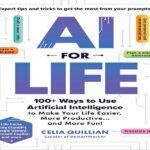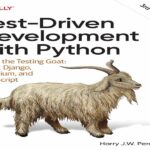- عنوان کتاب: Imaging in Geriatrics
- نویسنده: Giuseppe Guglielmi
- حوزه: تصویربرداری تشخیصی
- سال انتشار: 2023
- تعداد صفحه: 460
- زبان اصلی: انگلیسی
- نوع فایل: pdf
- حجم فایل: 26.0 مگابایت
تغییرات جمعیتی، به دلیل طول عمر بیشتر و بهبود کیفیت زندگی، منجر به پیری جامعه شد که در آن توسعه مراقبت های بهداشتی با کیفیت بالا برای افراد مسن اهمیت فزاینده ای پیدا می کند. امروزه جمعیت سالمند بیشتر از طریق فناوری و درمان پیشرفته، آگاه تر شده و خواستار مراقبت های بهتر هستند. به طور خاص، رادیولوژیست ها نقش مهمی را ایفا می کنند و موقعیت خط مقدم را در ارزیابی این گروه از بیماران، که نیاز به تصویربرداری قطعی دارند، اشغال می کنند. در این دیدگاه، رابطه پیچیده بین سالمندان و رادیولوژی باید دوباره تعریف شود. تصویربرداری در طب سالمندی نتیجه کار گروهی رادیولوژیست ها، متخصصان در این زمینه است، با هدف ارائه راهنمایی برای استفاده مناسب از تصویربرداری در مراقبت های مدرن سالمندی، توصیف نحوه تشخیص آسیب شناسی از یافته های پارافیزیولوژیکی در جمعیت سالمند. مطالعه تصویربرداری تشخیصی در سالمندان، غنیشده با روشهای تصویربرداری سنتی و مدرن، عمدتاً به تجزیه و تحلیل بالینی و رادیولوژیکی است که اغلب در این بیماران با آن مواجه میشود و مهمتر از همه، تمایز آسان بین «طبیعی» و «آسیبشناختی» است. به ویژه در شرایطی که تغییرات پارافیزیولوژیکی ناشی از فرآیندهای پیری با تغییرات مرتبط با همبودی و مزمن همراه است. این جلد شامل یک رویکرد چند رشتهای است و تمام مسائل عمده پزشکی مرتبط با پیری را که بر اساس دستگاه تقسیم میشوند، پوشش میدهد. به ویژه، آسیب شناسی های اصلی در زمینه های عصبی، قلبی عروقی، ریوی، گوارشی، دستگاه ادراری تناسلی، خونی و اسکلتی عضلانی را در بر می گیرد. این کتاب تمام تکنیکهای تصویربرداری را که سنگ بنای رادیولوژی بودهاند و همچنین نوآوریهای مدرن را در نظر میگیرد. رادیوگرافی معمولی هنوز اولین رویکرد در تشخیص انواع مکرر شرایط پاتولوژیک بیماران مسن است، مانند شکستگی، که اغلب به دلیل پوکی استخوان، پنوموتوراکس یا نارسایی قلبی است. از سوی دیگر، توموگرافی کامپیوتری (CT)، با قدرت تفکیک ذاتی خود، به رادیولوژیست ها اجازه می دهد تا یک کانون مغزی ایسکمیک یا هموراژیک احتمالی، و همچنین متاستازهای نئوپلاستیک را برای مرحله بندی پاتولوژی اولیه تشخیص دهند. آسیب های نخاعی به بهترین وجه با تصویربرداری رزونانس مغناطیسی (MRI) شناسایی می شود. اما امروزه، و بنابراین، پزشکی مدرن «تخصصی»، در حال تغییر است و به سمت هوش مصنوعی (AI)، یک تحول تکنولوژیکی که محدودیتهای مربوط به آموزش و بهروزرسانی پرسنل مراقبتهای بهداشتی درگیر را به همراه دارد، در حال تغییر است. به همین دلیل، در پایان این جلد، بخشی در مورد نقش هوش مصنوعی در مدیریت بیماران سالمند را نمی توان از دست داد. در نهایت، هدف این کتاب سادهسازی رویکرد و فرآیند تصویربرداری تشخیصی بیماریهای سالمندی، نشان دادن پتانسیل و محدودیتهای هر تکنیک تصویربرداری است. خواندن این کتاب را نه تنها به رادیولوژیستها برای انجام فعالیتهای بالینی روزانهشان، بلکه به همه پزشکانی که به دلیل تظاهرات بالینی پیچیدهشان به دانش اولیه تصویربرداری در مورد آسیبشناسیهای اصلی سالمندی نیاز دارند، توصیه میکنیم.
Demographic changes, due to the longer lifespan and the improvement of the qual¬ity of life, led to an aging society, where developing high-quality healthcare for older people becomes increasingly important.
Nowadays the elderly population is more informed and more demanding of bet¬ter care through cutting-edge technology and treatment. Specifically, radiologists play an increasingly important role and occupy a frontline position in the evaluation of this cohort of patients, who necessitate definitive imaging.
In this perspective, the complex relationship between geriatrics and radiology must be redefined. Imaging in Geriatrics is the result of a teamwork of radiologists, experts in the field, with the aim to provide guidance for the appropriate use of imaging in modern geriatric care, describing how to recognize pathology from para-physiological findings in the elderly population.
The study of diagnostic imaging in geriatrics, enriched by traditional and modern imaging methods, is primarily oriented to the clinical and radiological analysis most frequently encountered in these patients and, above all, to the not easy distinction between “normal” and “pathological,” especially in situations in which para-physi¬ological changes resulting from aging processes are associated with alterations related to comorbidity and chronicity.
This volume includes a multidisciplinary approach, and it covers all major medi¬cal issues related to aging, divided by apparatus. In particular, it encloses the main pathologies in the neurological, cardiovascular, pulmonary, gastrointestinal, uro¬genital, hematologic, and musculoskeletal field.
This book considers all imaging techniques that have been the cornerstones of radiology, but also modern innovations. Conventional radiography is still the first approach in the diagnosis of a frequent variety of pathological conditions of elderly patients, such as fractures, often due to osteoporosis, pneumothorax, or heart fail¬ure. On the other hand, Computer Tomography (CT), with its intrinsic resolution power, allows radiologists to detect a possible ischemic or hemorrhagic cerebral focus, as well as neoplastic metastases for the staging of the primary pathology. Spinal cord injuries are best identified with Magnetic Resonance Imaging (MRI). But nowadays, and therefore modern “tailored” medicine, is changing, going towards Artificial Intelligence (AI), a technological evolution that brings with it the limits related to the training and updating of the healthcare personnel involved. For this reason, a section about the role of AI in the management of geriatric patients could not be missed at the end of this volume.
Finally, the aim of this book is to simplify the approach and the diagnostic imag¬ing process of geriatric diseases, bringing out the potential and limitations of each imaging technique.
We recommend the reading of this book not only to radiologists for their daily clinical practice but also to all physicians who require a basic knowledge of imaging concerning the main geriatric pathologies, because of their complex clinical presentations.
این کتاب را میتوانید بصورت رایگان از لینک زیر دانلود نمایید.
Download: Imaging in Geriatrics




































نظرات کاربران